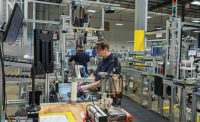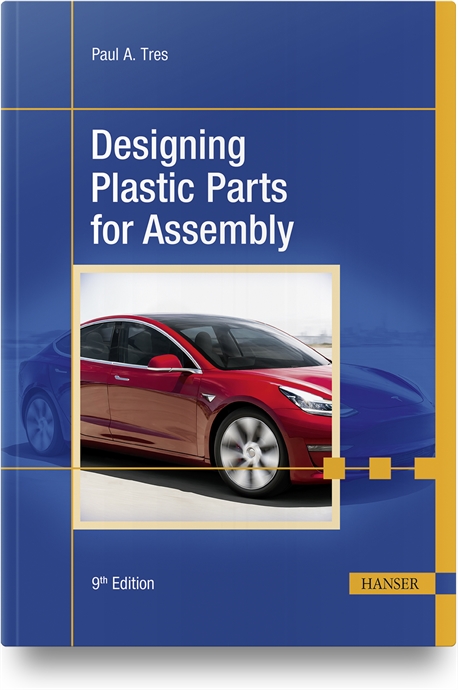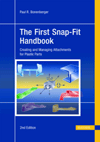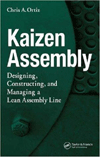Parts handling is one of the most critical challenges in automated assembly. Without it, automation is not possible. Other aspects of automation are also important, such as assembly and conveyance methods. But freeing an operator from manually orienting and positioning parts allows manufacturers to increase cost savings and improve quality. Even in a partially manual assembly process, automated feeding and part orientation allow the operator to keep pace with the automated parts of a system.
Some methods combine or eliminate intermediate steps of parts handling. But regardless of the method, all parts handling systems must perform the following functions:
- Feeding—singulation and orientation.
- Positioning—isolation and presentation.
- Manipulating—gripping and placement.
What Is Feeding?
Feeding transfers parts from a random mass to a predictable position. It can be any method that singulates and orients parts. Singulation separates a mass of parts into individual parts. Orientation sets or arranges a part in a determinate position from random positions.Positioning is the method by which parts are isolated and presented to the third device, a manipulator. Isolation differs from singulation. A singulated part isn’t necessarily oriented.
The manipulator is a device within the assembly system that places the parts in their final position.
Feeding Methods
Some of the more traditional feeding methods include electromagnetic vibratory bowls, motorized centrifugal bowls, inline feeders, and single- and dual-belt feeders. As parts become more complex and speeds increase, more innovative methods are used. These include tray feeding, robotic and vision systems, reel-fed tape, pocketed tape and die-cut on demand.Each feeding method has its advantages, and some are more appropriate for certain types of parts or certain assembly speeds. The feeding system works closely with the positioning and manipulating systems. Therefore, the method needs to be thoroughly thought out before it can be considered appropriate for the parts.
Bowl feeding and inline tracks are the most common feeding methods. Because of the variety of parts that can use this method, bowl building is more art than science. Simple parts can be singulated and oriented by a vibratory cascade bowl. Parts not correctly oriented by a certain point in the bowl are rejected and recirculated. Similarly, motorized centrifugal bowls fling parts up against a tooling ring, which holds parts in the correct orientation and allows others to fall back into the bowl. A scallop feeder is a variation of this. It can quickly feed slender parts that must exit the bowl standing upright.
With these methods, the feed rate must be high, because the rejection rate in the bowl is high. This could mean damage to parts that can’t take repeated impacts. Outside track vibratory bowls are for more complex parts, because the inside and outside of the bowl are used to select or reject features of a part—one feature at a time.
Whether by vibration or centrifugation, bowl feeding is better for parts that are robust. This is not a good method if marking the part is a problem or if the part has features that can easily break.
Gravity feeders are even simpler and can be used for feeding spherical objects down a tube. They can also be an inexpensive choice for feeding long, preoriented cylindrical objects, side by side, along their horizontal axes. An anti-bridging device, either mechanical or vibratory, is usually necessary at the discharge end of the feeder. This will prevent jamming.
Flexible feeders dump random, unoriented parts onto a belt conveyor. In its most complex form, this method ties together robotics and a vision system. The vision system provides guidance, and a robot picks up the parts that are in the correct orientation. All other parts are recirculated and refed.
Trays, which have been preloaded with parts, are a good choice for painted parts, parts with cosmetic surfaces, preassembled or delicate parts. Singulation and orientation are already done. Only presentation and manipulation are needed. Ideally, the tray would accurately locate the parts, so a vision system is not required. One advantage of tray feeding is that the automation components that feed the trays and manipulate parts from the tray can be standardized. Standardization allows the same basic machine design to work in many applications. This decreases cost and lead-time. Also, the tray is reusable after it is emptied. It is possible to place a part back in the same tray after an assembly operation. With this method, tray design is important. The tray must nest, separate and hold the parts. Tray material depends on the application. But it is commonly made of thermoformed or injection-molded plastic.
Tubes, commonly used in the electronics industry, are typically used for parts with pins, which would otherwise be damaged or snarled in a bowl feeder. Parts are preoriented at the point of manufacture and held, end-to-end, in the tube. The automation system then feeds them, like bullets in a clip or a coin feeder method. Like the tray method, singulation and orientation are already done. Parts that work successfully using this method must have the right profile for a preformed tube and the right aspect ratio for feeding without jamming in the tube. Examples include integrated circuit packages, bearings and some springs. Like trays, tubes are reusable.
With pocketed tape, reels of prefilled pocketed tape with a cover layer are fed into the automation system and positioned using a tractor feed method. Holes in the tape engage teeth in the feeder. The cover layer is continuously removed to reveal the parts. This method is reserved for parts that damage easily or that can’t be held tightly for positioning. Because of this, they may need an intermediate nest for accurate positioning. Examples include insert-molded contacts, magnets, fragile plastic or metal parts.
Die-cut pressure-sensitive tape is used in automation with increasing frequency—as some parts that were once injection-molded plastic or metal stampings have become die-cut, pressure-sensitive, adhesive-backed thin films on a release liner. Examples are gaskets, labels, protective films and decorative trims. Web-handling units, which are similar to labeling machines, feed the preoriented part to a placement device.
Reel feed systems are a good example of designing the part to fit an automation system. Parts are manufactured in a continuous strip, reeled up and sheared off the reel at the point of assembly. One advantage of this method is that the reel feeder uses less floor space than a bowl feeder to feed the same part. Examples include electronic components, metal contacts, lead frames, and some springs and pressure-sensitive foam tapes for vibration reduction in electronic devices.
Manual methods are reserved for parts that can’t fit into the above categories because they are too large, can’t be oriented reliably, have delicate cosmetic surfaces or can’t justify themselves as automated functions.
Positioning Methods
Assuming a part makes it this far and hasn’t been recirculated, it will need to be isolated from others that have been successfully singulated and oriented. This allows only one part to be manipulated without disturbing others. This step must be compatible with the feeding method and the manipulation method and applies primarily to parts that have been fed by bowls and inline tracks.A dead nest is the simplest and most passive method for presenting parts at the end of an inline track. The part to be manipulated is pushed by the part behind it and held in a static pocket. A holdback clamp momentarily prevents other parts from being disturbed as the manipulator takes the nested part away.
Shuttles are appropriate when the part needs to be isolated from others upstream. It can be held in a pocket mounted to a reciprocating actuator and shuttled to a secondary position for pickup. The pocket must be tooled to fit and hold the part, and to allow the manipulating device to grasp the part and remove it. Shuttles can take many forms, such as pockets in a plate or holes in a block. They can be moved either laterally or vertically, and driven by an air cylinder, cam or electromechanical actuator.
The starwheel method is a rotary version of the lateral shuttle. Parts are stripped away from the discharge of an inline feeder, continuously or in indexing fashion, by the pockets in a rotating wheel. Parts are usually picked off at the 12 o’clock position, held by a vacuum and placed at the 6 o’clock position. This method is commonly used in high-speed, continuous operations.
Tubes are someArial used with a shuttle for isolation. A tube can feed cylindrical or spherical parts for presentation. The tube is pressurized during feeding to rapidly bring oriented parts to the right location. Common uses are for fasteners, springs, or parts that must travel a complex path or undergo an elevation change.
Manipulating Methods
How should a part be handled once it has been fed and positioned? The choice depends on many things, such as the strength of the part if mechanically gripped, ferrous content if held magnetically or porosity if held by a vacuum gripper.A vacuum gripper is the simplest, cheapest and most common device for manipulating smooth, lightweight parts, and when positional tolerance can be held with other devices. For example, a cylindrical part can be held to a centerline if the vacuum gripper is nested within V-block tooling.
Magnetic grippers can be used like vacuum grippers, if the part is made of a ferrous material and can be held well enough to get to its destination.
Mechanical grippers come in an array of sizes, gripping actions and load conditions. They can provide for some misalignment of the positioned part during pick-up. They can also hold a tight tolerance once the part is gripped.
Mounting the gripper is also part of the puzzle. As before, the placement portion of the automation scheme can overlap its role with its upstream components. For example, a pick-and-place device can invert or reorient a part between the pick-up and placement position. This removes some burden from the feeding system.
Mechanical pick-and-place systems can range from one to four axes of motion and can be linear or rotary combinations. They have a variety of drive methods, such as a pneumatic cylinder and slide, and cam-driven or motor-driven actuators. Mechanical pick-and-place systems are commonly used when the required motion is moderately simple, there are few pick-and-place points, the automation system is fixed or the part can’t justify a robotic solution.
The decreasing cost of robotics and control systems and increasing familiarity on the production floor have made robotics the device of choice. A robotic system is appropriate for complex motions, and can provide high speed and accuracy. Perhaps most importantly, robotic systems are key to creating modular and flexible automation schemes. Robotic and vision system combinations work well for guidance in picking and placing parts. This can eliminate some feeding and precision handling devices for the assembly fixture.







